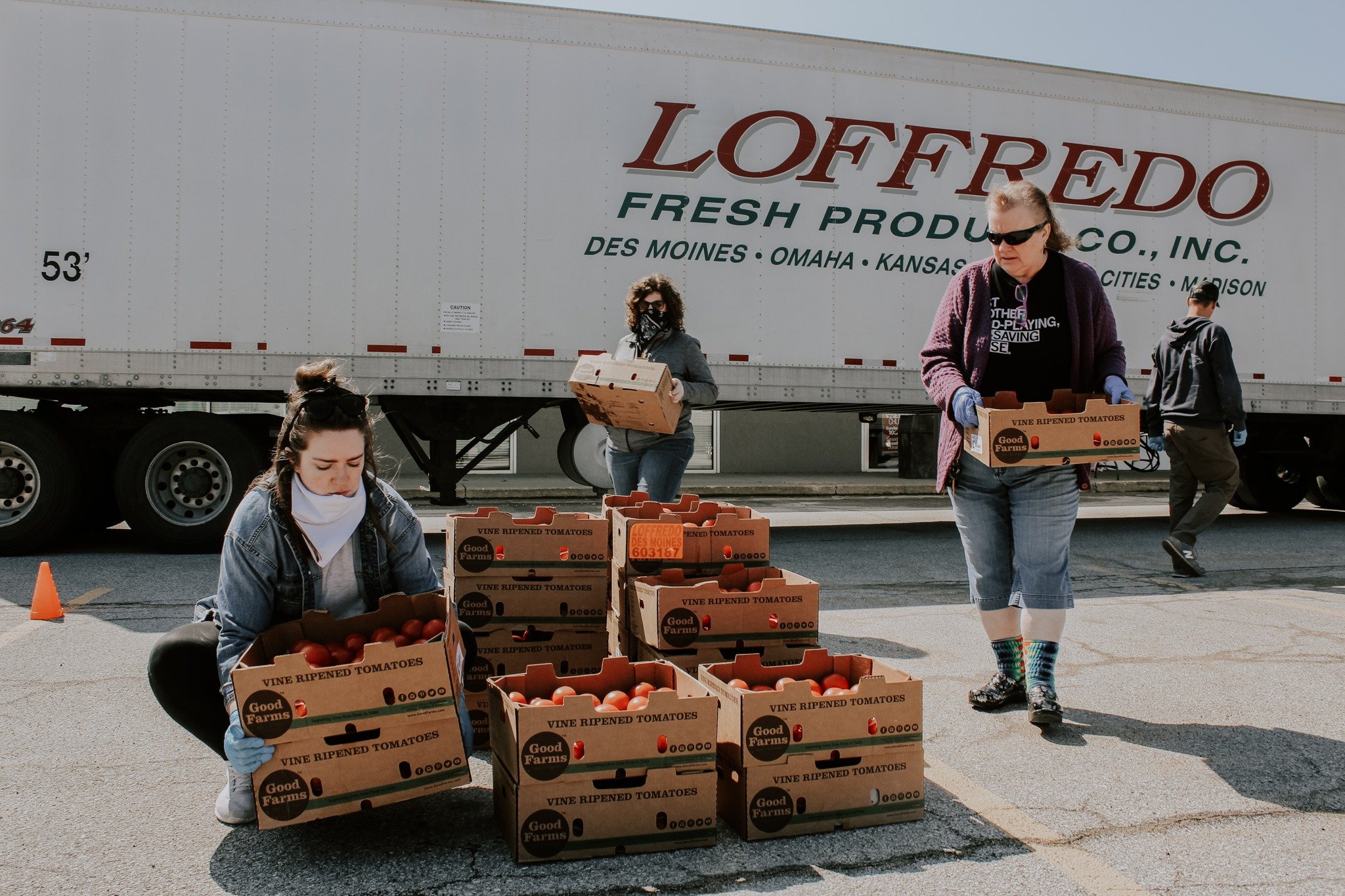

Access to fresh, affordable, healthy foods is a key indicator of Health & Well-Being (one of the Five Elements of a Thriving Community.) According to Feeding America, people who live in rural areas often face hunger at higher rates than people who live in urban areas. Living in a rural community comes with unique challenges, including lack of transportation when the nearest grocery store is at a greater distance than one mile and the nearest food pantry or food bank is potentially hours away. In rural areas, job opportunities are more concentrated in low-wage industries and see higher rates of unemployment and underemployment. In urban areas, the food deserts exist in areas with higher populations of families with low-income.
As part of the COVID-19 response, the USDA started exercising authority under the Families First Coronavirus Response Act to purchase and distribute agricultural products to those in need through USDA Food Boxes. Through this program, Eat Greater Des Moines is working with additional United Way partners like DMARC, Hunger Free Dallas County, and The Helping Hand Food and Clothing Pantry of Warren County to go above and beyond in delivering boxes to those who need them most.
Eat Greater Des Moines’s Operation Fresh Produce Drop started in April 2020 in response to the strains put on our food system from unexpected closures and an increased need for food – and evolved into distributing over 3,500 USDA boxes of produce and dairy a week. Fresh, healthy food has been distributed to over 100 different local organizations—churches, refugee and immigrant serving organizations, youth programs, affordable housing communities, and in-home daycare centers that cannot access emergency food resources due to existing structures.
Pop Up Produce, a program of Hunger Free Dallas County, also works with Eat Greater Des Moines to receive USDA boxes. Hunger Free Dallas County operates in various towns, like Redfield, with limited access to fresh produce in Dallas County, IA. Redfield, with a population of about 800 people, doesn’t have a grocery store in town and its citizens have to drive to Adel (roughly 13 miles) to purchase fresh produce.
“Before the pandemic, we were able to successfully distribute all of the Pop Up produce, selling it at cost,” said Pam Danielson, volunteer with Pop Up Produce. “Once the pandemic arrived and the food needs of the residents of Redfield grew, we used the Pop Up Produce program as more of a food distribution system to distribute boxes of food provided through Hunger Free Dallas County at no charge to the residents.”
Pam works diligently to distribute every ounce of produce available. She worked with Redfield City Hall, the senior citizen apartment complex, daycare providers, and even personally delivered any boxes that were available to individuals and families who utilized the food pantry. “I know this town so well, I was able to identify many other families too proud to come to the food pantry, but who were in need,” Pam said. “I just dropped them at their door.”
The ripple effect of eating a healthy diet is impossible to ignore – but it’s difficult to start without access to nutritious food. The distribution of USDA boxes has become a secondary network of support, built out of need, and supplements the traditional emergency food system as it struggles to cope with the current crisis. “Groups receiving boxes are renting U-Haul’s and refrigerated trucks to pick them up, organizations are sending multiple staff members to pick up 5-6 boxes each to then deliver to families, and pantry leaders are lining up volunteers who bring large trucks to travel weekly to pick up their supply of boxes,” Aubrey Alvarez, Executive Director of Eat Greater Des Moines said. “We know it’s making an incredible impact in our community.”
CTA Headline Goes Here Lorem Ipsum Dolor Sit Amet
Lorem ipsum dolor sit amet consectetur. Quis congue varius a.